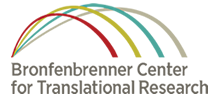I have always loved the county fair. So much so – yes, I’m going to admit it – that on the day after my wedding many years ago we took the entire gang to the the Lorain County Fair in Ohio. And Cooperative Extension staff and participants also enjoy county and state fairs – and devote considerable time throughout the year to planning and preparing for them.
So my interest was piqued by the title of a recent article in the Journal of Extension: “Fairs and other Exhibitions: Have We Really Thought this Through?” Author Donald Nicholson points out that the investment of effort and time by staff makes makes fairs the largest single program in Cooperative Extension. As he puts it: “There is no doubt that “The Fair” is deeply woven into the very DNA of Extension.” But that, he argues, keeps us from evaluating what we get from all the investment.
Nicholson asks: What do we actually know about whether participation in fairs actually promotes youth development?The answer, surprisingly, is that there is almost no scientific evidence of any kind on this topic. He notes that the public, and commodity groups. heavily support the fair, and that it is extremely popular among extension staff and program participants. But he poses a set of thought-provoking questions for state and county extension programs to consider:
- What is the 5-year or 10-year goal of Extension in regard to our role, goals, and mission with the fairs in your local or state Extension program?
- What is the research agenda and intention regarding fairs in your state?
- Are the procedures used and the time invested by Extension truly guided by research-based information?
- Could the same educational content be more effectively delivered in other ways with a similar or lesser investment of time and resources?
What is lacking is any solid research evidence regarding the benefits of fair activities to youth participants. Nicholson was able to identify only two pilot studies that addressed this issue. Given that fairs are probably the single biggest investment of extension, he argues for the development of a knowledge base on what youth development outcomes are achieved by fairs.
Very thought-provoking – as are the comments that follow the article. Some commenters agree with a closer examination of the effectiveness of fairs in extension, whereas others argue for the economic and public-relations benefits of the fair, regardless of scientifically-assessed outcomes.
Leave us a comment with your thoughts on this topic!



Speak Your Mind